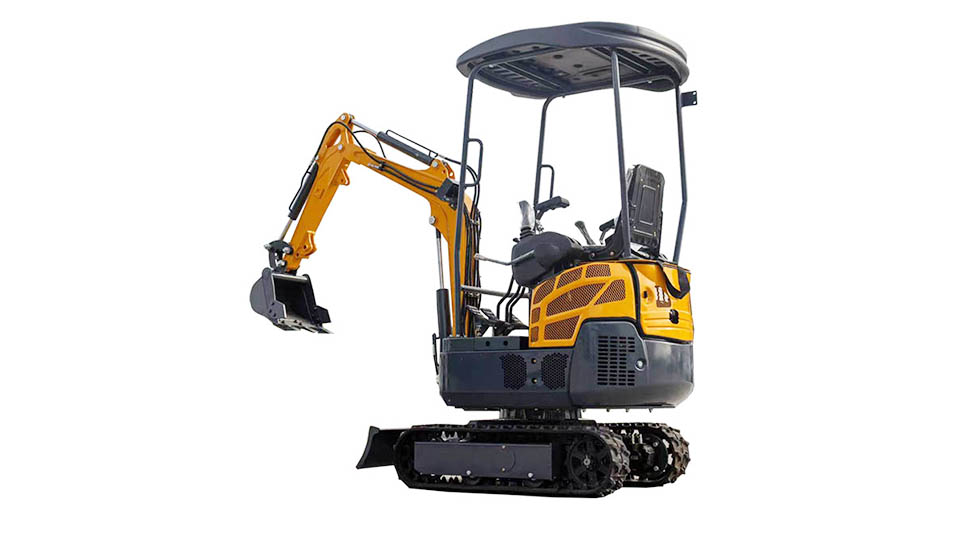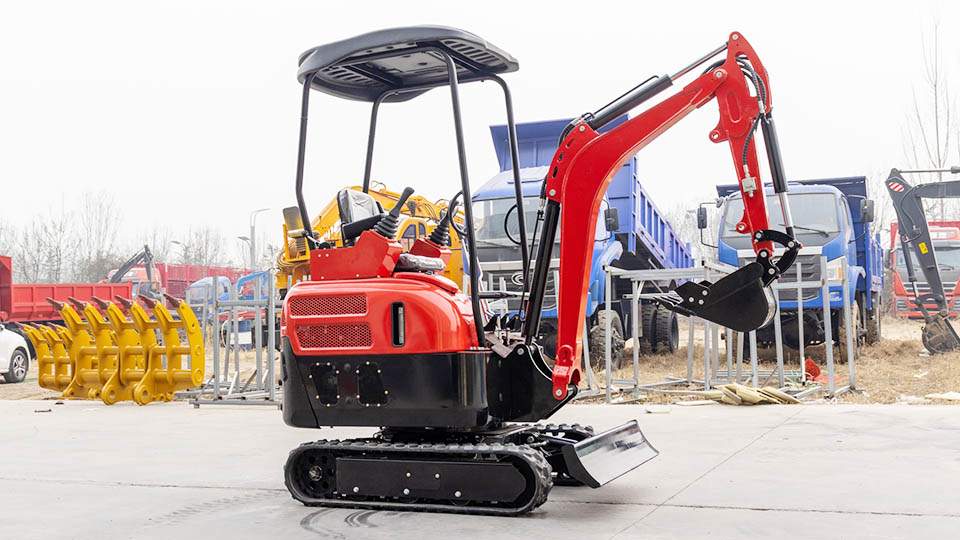Introduction
In construction, a successful lifting operation is a symphony of precision, power, and planning. Whether hoisting a steel beam, placing a pre-cast concrete slab, or lowering a pipe into a trench, the excavator often serves as the primary lifting tool. The key to a safe and efficient lift lies in one fundamental question: "How do I ensure the excavator's lifting capacity matches my project's needs?" Miscalculating this can lead to catastrophic failure, including machine tip-over, structural damage, and severe injury or death.
The Foundation of Safe Lifting: Understanding the Core Concepts
Before any lift is attempted, it is crucial to understand the technical principles that govern an excavator's lifting capacity. The machine's ability to lift a load is determined by two primary and competing factors: hydraulic capacity and tipping load.

1. Hydraulic Capacity
This is the maximum force the excavator's hydraulic system can generate to lift a load. It is a measure of the system's power, determined by factors such as hydraulic pressure, pump capacity, and cylinder size. When a lift is limited by hydraulic capacity, the machine's engine will strain, and the boom may struggle to raise the load, even if the machine itself remains stable. The hydraulic system's capacity is a fixed limit that a machine cannot exceed, regardless of how stable it is.
2. Tipping Load (or Stability)
This is the point at which the excavator's center of gravity shifts so far forward that the machine becomes unstable and begins to tip. The tipping load is not a fixed number; it is a dynamic value that changes with every movement of the boom and arm. It is a function of the machine's operating weight, its counterweight, and the position of the load relative to the machine's pivot point. To ensure a safety margin, manufacturers legally rate an excavator's lifting capacity at a maximum of 75% of the tipping load. This is a critical safety buffer that prevents operators from working on the absolute edge of stability.
The Key to Safety: The Excavator Lift Chart
Every excavator manufacturer is required to provide a detailed lift chart, which is the definitive guide to a machine's lifting capabilities. This chart is a grid of data that outlines the maximum safe lifting capacity for a specific machine under various conditions. It is typically found in the machine's operation manual and, in many cases, is posted as a decal within the operator's cab.
To properly use a lift chart, an operator must understand its key components and how they interact.
Components of a Lift Chart:
Lift Point Height: This is the vertical distance from the ground to the load's connection point on the machine (e.g., the bucket pin or a lifting hook). This value is typically shown on the vertical axis of the chart. The lifting capacity often decreases as the lift point height increases.
Lifting Radius: This is the horizontal distance from the excavator's centerline of rotation to the center of the load. This value is typically shown on the horizontal axis of the chart. A greater lifting radius creates a longer lever arm, which dramatically reduces the machine's lifting capacity.
Over-Front vs. Over-Side: Most lift charts provide separate capacity values for lifting over the front of the machine versus lifting over the side. Due to the placement of the counterweight, an excavator is always more stable and has a higher lifting capacity when lifting over the front.
Machine Configuration: A lift chart is specific to a machine's configuration. This includes the length of the boom and arm, the type of counterweight, and the presence of a dozer blade or outriggers. If the machine's setup differs from the chart's specified configuration, the chart's values are no longer valid.
Tipping vs. Hydraulic Limit: On many charts, capacities that are limited by hydraulic power are marked with an asterisk or another symbol. This is an important distinction, as it tells the operator which of the two primary limits they are approaching.
How to Read a Lift Chart (Step-by-Step):
Determine Your Load's Weight: This is the single most critical step. The weight of the load, including all rigging, slings, and attachments (minus the standard bucket weight if specified), must be known with certainty. A crane scale is often used to get an exact weight.
Assess Your Lifting Scenario: Measure the required lift point height and the horizontal lifting radius for your project.
Consult the Lift Chart: Find the intersection point on the chart's grid where your required lift point height and lifting radius meet.
Find the Rated Capacity: The number in that cell is the maximum safe lifting capacity for your specific conditions.
Compare and Confirm: Compare your load's weight to the rated capacity. If the load is less than or equal to the rated capacity, the lift is theoretically safe. If the load's weight exceeds the chart's value, the lift must not be attempted. The machine must be repositioned, or a larger excavator must be used.
Real-World Factors Influencing Lifting Capacity
While the lift chart is the technical standard, real-world conditions on a job site can significantly alter an excavator's actual lifting ability. A responsible operator and supervisor must account for these factors to ensure a safe lift.
1. Ground Conditions
The lift chart's values are based on the assumption that the excavator is operating on a firm, level surface. Soft, uneven, or sloped ground can drastically reduce the machine's stability and, therefore, its lifting capacity.
Uneven Ground: An excavator on uneven ground has a compromised stability triangle. Even a small tilt can shift the center of gravity, reducing the tipping load.
Soft Ground: Soft soil can cause the excavator to sink or shift under load, creating an unstable base.
Sloped Ground: A slope is a major hazard. Lifting downhill reduces stability, while lifting uphill can put excessive strain on the machine.
2. Machine Attachments
The weight of the excavator's attachments is a critical factor that is often overlooked. A lift chart is typically calibrated for a standard bucket. If a heavier or specialized attachment, such as a grapple, hydraulic hammer, or lifting hook, is used, its weight must be subtracted from the chart's rated capacity. This is because the additional weight of the attachment directly reduces the available capacity for the load.
3. Operator Skill and Practices
A skilled operator plays a vital role in executing a safe lift. Poor operating practices can compromise even a well-planned lift.
Sudden Movements: Quick or jerky movements can create dynamic forces that exceed the machine's static lifting capacity, leading to a tip-over.
Incorrect Positioning: The operator must position the machine to minimize the lifting radius and maximize the use of the more stable "over-front" position whenever possible.
Lack of Communication: Clear communication with a spotter or signal person is essential to ensure the lift is executed smoothly and that no personnel are in the danger zone.
4. Environmental Conditions
Wind, rain, and freezing temperatures can all impact a lift. Strong winds can exert a force on the load, making it difficult to control. Wet or icy ground can create slippery conditions, reducing the machine's stability.
A Technical Guide to Safe Lifting Practices
A structured, systematic approach to lifting is the key to minimizing risk. The following technical checklist should be followed for every lifting operation.
Pre-Lift Checklist:
Identify the Load: Know the exact weight, dimensions, and center of gravity of the load. Account for all rigging and attachments.
Inspect the Excavator: Perform a thorough pre-shift inspection. Check the hydraulic lines, cylinders, and structural components for any signs of damage or leaks.
Consult the Lift Chart: Use the lift chart to determine the maximum safe capacity for your specific lift radius and height.
Subtract Attachment Weight: If using a non-standard attachment, subtract its weight from the chart's capacity.
Verify Ground Conditions: Ensure the ground is firm, level, and capable of supporting the machine's weight and the load.
Position the Machine: Position the excavator to lift over the front, if possible, and as close to the load as safely feasible to minimize the lifting radius.
During-Lift Checklist:
Use Proper Rigging: Ensure all slings, shackles, and hooks are rated for the load and are in good working condition.
Lift Slowly and Smoothly: Use smooth, controlled movements to avoid sudden changes in the machine's center of gravity.

Keep the Load Low: The closer the load is to the ground, the more stable the machine. Lift only as high as necessary.
Maintain Communication: Use a spotter and pre-determined hand signals to ensure clear communication.
Monitor the Machine: Pay attention to any signs of instability, such as a track lifting off the ground, and be prepared to stop the lift and lower the load if necessary.
Conclusion
Ensuring an excavator's lifting capacity matches a project's needs is a non-negotiable aspect of professional construction and earthmoving. It is a technical process that demands a deep understanding of hydraulic principles, stability dynamics, and real-world variables. The foundation of this process is the manufacturer-provided lift chart, which serves as a critical safety document.
By meticulously following the steps outlined in this article—from accurately determining the load's weight to consulting the lift chart and accounting for environmental factors—professionals can transform a potentially hazardous task into a safe and routine operation. The consequences of neglecting this process are too severe to ignore. A thorough understanding of excavator lifting capacity is not just a matter of technical expertise; it is a commitment to safety, efficiency, and the well-being of every person on the job site.
Post time:Sep-25-2020
